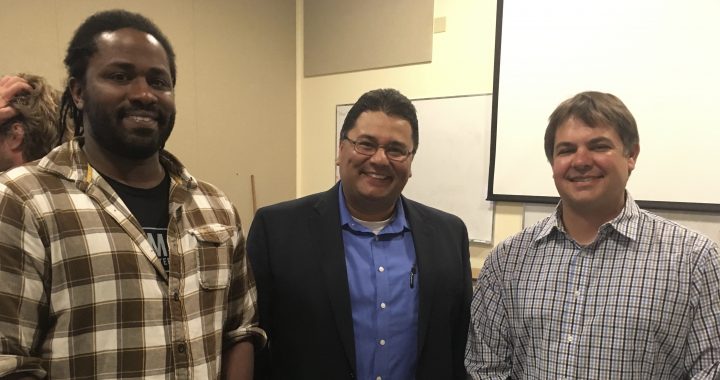One of the primary goals in conservation science is to inform policy makers and the general public on the state of biodiversity on this planet. This noble and lofty goal has been motivated by environmental studies documenting the harmful effects of humans on natural populations and ecosystems. Paradoxically, while we are documenting the loss of biodiversity on planet earth, the voices in conservation science lack human diversity. The Society for Conservation Biology has recognized this as a major weakness in our ability to generate and promote the best conservation science and environmental impact. In general, conservation science is not representative of our diverse society, and we are looking into ways to “fix the leaky pipeline”, and the many obstacles to wider diversity in our professional field. I won’t go into all of the details, but I highly recommend that anyone interested in diversity issues within the field of conservation and environmental sciences to go to this website: http://www.diversegreen.org, and read the summary report “The State of Diversity in Environmental Organizations: Mainstream NGOs, Foundations & Government Agencies” (http://vaipl.org/wp-content/uploads/2014/10/ExecutiveSummary-Diverse-Green.pdf).
Recently, members of the Santa Cruz Chapter of the SCB, the Society for Advancement of Chicanos/Hispanics and Native Americans in Science (SACNAS), and the Doris Duke Conservation Scholars Program came together to discuss issues related to diversity and inclusion in conservation science. I approached the SCSCB to give a report on a diversity workshop I recently attended with the Smith Conservation Fellowship Program. The leadership within SCSCB were more than enthusiastic to have this discussion and organized a panel, which included Justin Cummings (Director, Doris Duke Program @ UCSC, http://conservationscholars.ucsc.edu/people/), Rolando Madrid (Director of Programs @ SACNAS, http://sacnas.org/about/who-we-are/staff), and yours truly (http://research.pbsci.ucsc.edu/eeb/bbhughes/). The three panelists provided an overview of their respective programs, which led into a round table discussion about diversity issues in conservation and exploring solutions.
A lot of the discussion focused on the leaky pipeline, specifically, where are we losing diversity among the ranks in conservation? High school? Undergraduate? Graduate school? What are the cultural and societal barriers to a career in conservation for under represented groups? And more importantly, are there solutions? The group identified positive directions, but there is not a single solution to such a complex challenge. Some of the solutions discussed were actively mentoring students from underrepresented groups and helping to bridge gaps that prevent students from reaching leadership positions in conservation. The group collectively recognized that many minorities choose not to pursue conservation at the undergraduate and high school levels, emphasizing the importance of SACNAS and the Doris Duke Programs. SACNAS is a massive program (25,000 members) with the goal of advancing the careers of minorities in STEM, and organizes one of the only science conferences on the planet that features science by minority students and professionals. The Doris Duke Conservation Scholars program, funded by the Doris Duke Charitable Foundation, has been established at 5 universities in the United States (University of Washington, University of Florida, Northern Arizona University, University of Michigan, and University of California Santa Cruz) and seeks to prepare undergraduate students from underrepresented backgrounds to be future leaders in conservation. Scholars are introduced to conservation science and leadership through intensive training over two consecutive summers in the model of a paid internship.
If there was a big take home message from the SCSCB meeting on diversity issues in conservation it was to keep the conversation going. Talk about it with your peers, supervisors, students, administrators, funders, families, etc. By creating conversation the issue will not go away and will more likely gain steam and go from conversation to actions to make the conservation community more diverse and inclusive. One simple step became clear, encourage your local SCB chapter or institution to adopt a diversity statement with stated goals. If your school or institution does not have diversity committee then start one. Encourage your school or institution to adopt mandatory diversity training for all employees.
For more information on diversity in the SCB go to:
https://conbio.org/about-scb/who-we-are/committees/diversity/
Brent Hughes, Ph.D.
David H. Smith Research Conservation Fellow
Duke University-Duke Marine Lab
